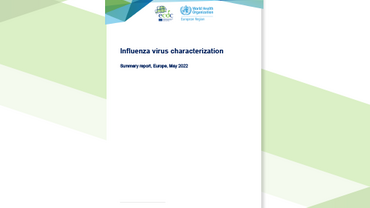Influenza Virus Characterisation, Summary Europe, November 2015
For week 40/2015, the start of weekly reporting on influenza activity in the WHO European Region, to week 49/2015 only 1380 influenza detections across the Region have been reported. Though numbers of detections are low so far, type A viruses are prevailing over type B, but – unlike the situation in the 2014–15 season – A(H1N1)pdm09 viruses are prevailing over A(H3N2), and the proportion of B/Victoria-lineage detections has risen substantially to represent ~50% of the type B detections.
Executive Summary
To date, four EU/EEA countries have shared 47 influenza-positive specimens with the Francis Crick Institute, London, for detailed characterisation. So far, only 10 of these have been characterised antigenically, and genetic analyses are ongoing.
The six A(H1N1)pdm09 viruses characterised antigenically were similar to the vaccine virus A/California/07/2009. Worldwide a new sub-cluster of viruses defined by HA1 amino acid substitutions S162N and I216T in the 6B genetic group has emerged.
The three A(H3N2) test viruses characterised by haemagglutination inhibition (HI) assay, all falling in genetic subgroup 3C.2a, were poorly recognised (titres at least sixteenfold reduced compared with the homologous titre) by reference antiserum raised against egg-propagated A/Switzerland/9715293/2013, the vaccine virus recommended for use in the 2015–2016 northern hemisphere influenza season. The test viruses were recognised somewhat better by antisera raised against egg-propagated A/Hong Kong/4801/2014, the virus recommended for use in southern hemisphere 2016 influenza vaccines.
The B/Victoria-lineage virus was antigenically similar to B/Brisbane/60/2008 and fell in genetic clade 1A, as do recently collected viruses worldwide.
No B/Yamagata viruses were characterised, but worldwide recently collected viruses have fallen in genetic clade 3, represented by B/Phuket/3073/2013, the recommended vaccine virus for the northern hemisphere 2015–16 influenza season.





